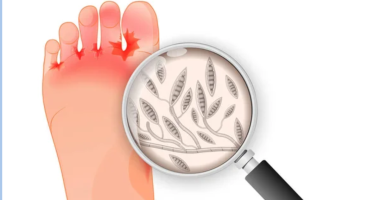
If you are obese, there is a good chance that you may have fatty deposits in your liver. Researchers from the University of Arizona believe that this may increase your chance of type 2 diabetes and preventing fat deposits in the liver may be the key to new, preventative Type 2 diabetes treatments. One of the main causes of the rising diabetes burden is an increase in the rates of obesity. Today, Type 2 diabetes is 24 times more prevalent than Type 1. The University of Arizona researchers say that the rise in rates of obesity and incidence of Type 2 diabetes are related and require new approaches. They also believe that the liver may hold the key to innovative new treatments.
Treating the cause and not the symptom
Researchers say that all available therapeutics for treating Type 2 diabetes aim to bring down blood sugar levels. This, they say, is actually just treating a symptom and not the root cause. To make a real difference, it is absolutely imperative to treat the cause. Keeping this mind, researchers of this study along with colleagues from Washington University in St. Louis, the University of Pennsylvania and Northwestern University outline a new target for Type 2 diabetes treatment in two newly published papers in Cell Reports.
Link between obesity and diabetes
It is a known fact among the scientific community that obesity and Type 2 diabetes share a close association. An obese person has more fat in the liver and as the fat increases in the liver, so dies the risk of diabetes. Hence, the researchers say that this fat may actually be causing Type 2 Diabetes. But they admitted that they have not yet been able to pinpoint how exactly fat in the liver causes the body to become resistant to insulin nor do they know how it causes the pancreas to over-secrete insulin.
Fatty liver and metabolic changes
Researchers measured the neurotransmitters released from the liver of obese animals to understand how the liver communicates with the brain to influence metabolic changes seen in obesity and diabetes. They saw that liver fat stimulates the release of the inhibitory neurotransmitter Gamma-aminobutyric acid, or GABA. They then identified the pathway by which GABA synthesis occurs and the key enzyme that is responsible for liver GABA production as GABA transaminase. GABA is a naturally occurring amino acid. It is the primary inhibitory neurotransmitter in the central nervous system.
Now, nerves provide a conduit for the brain and the rest of the body to communicate and this is two-way communication. When the liver produces GABA, it decreases activity of those nerves that run from the liver to the brain. The result is that the fatty liver, by producing GABA, decreases the firing activity to the brain. When this is sensed by the central nervous system, it changes the outgoing signals that affect glucose homeostasis.
Inhibition of GABA synthesis restores insulin sensitivity
Researchers, in a bid to see if an increase in liver GABA synthesis causes insulin resistance, inhibited liver GABA transaminase in animal models of Type 2 diabetes. They saw that insulin sensitivity was restored within days. They further saw that when they inhibited GABA-transaminase for a longer period, it also significantly brought down food intake and induced weight loss.
Clinical trial on
A clinical trial is currently underway at Washington University School of Medicine in St. Louis in collaboration with colleagues at Washington University professor to investigate the use of a commercially available Food and Drug Administration-approved inhibitor of GABA transaminase to improve insulin sensitivity in people who are obese.
This post first appeared on The Health Site









